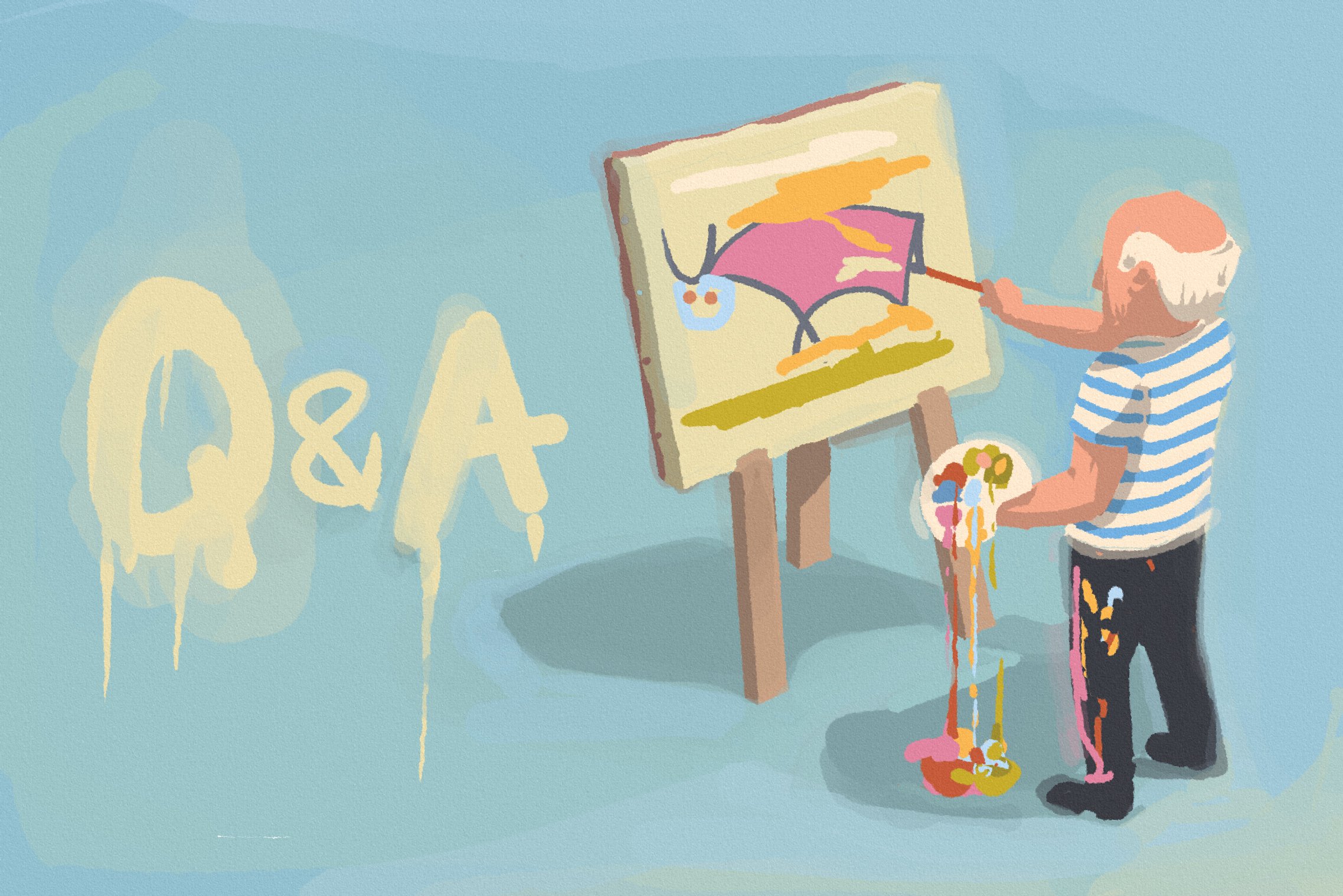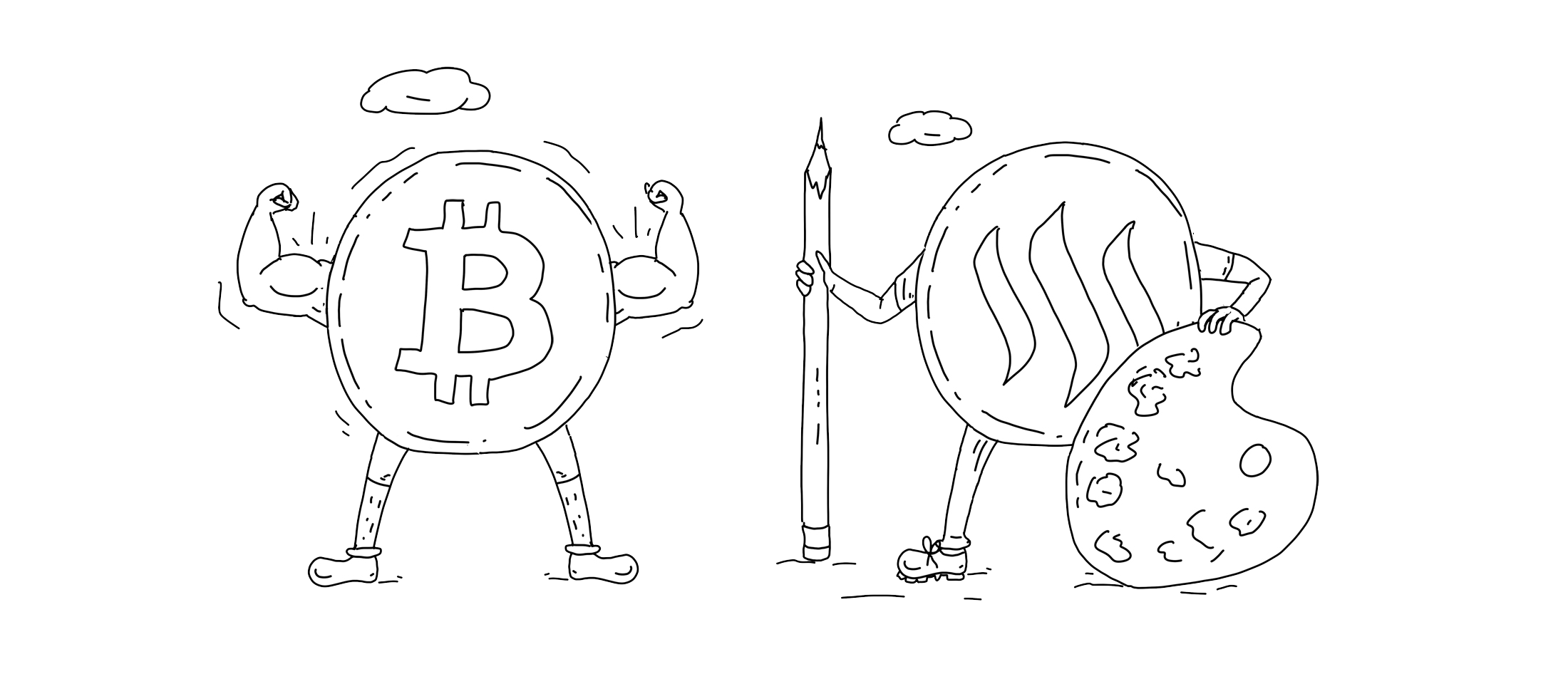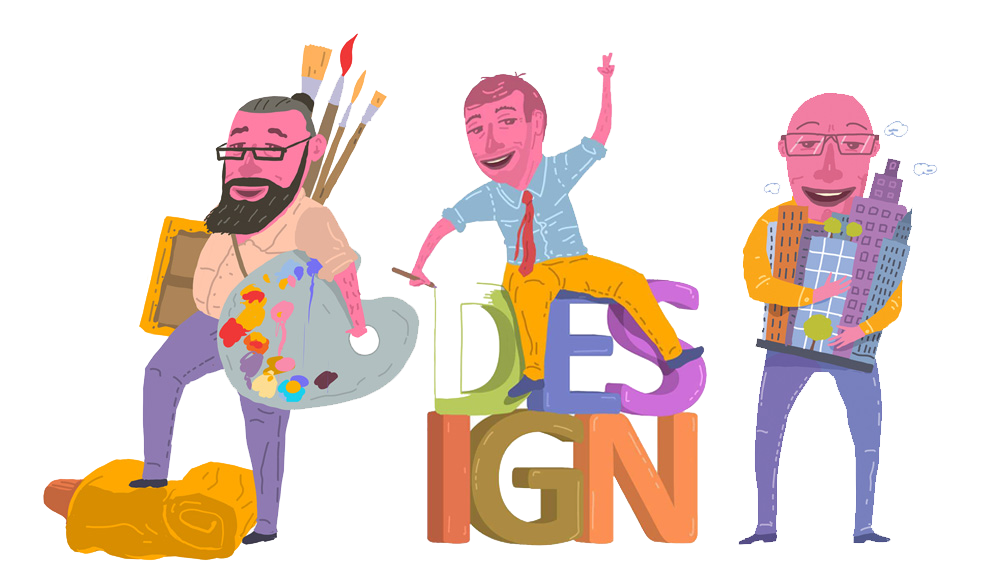
The illustration above was produced by artist @zsolt.vidak specifically for this article. You can see his original process and work, here.
Cryptocurrency, Art and Everything In-between
Last week, our team (@sndbox) gave a talk titled “Cryptocurrency and Art” at the Con Artist Collective in New York City. We presented the fundamentals of Steem and Steemit, the mission of the Sndbox incubator to accelerate professionals onto these technologies, and the development of The Creative Crypto to report on the growing world of design innovation in the blockchain space. After an hour presentation, we had an even longer Q&A session that elaborated on future prospects of blockchain and change to the creative world. We thought transcribing some of those fruitful conversations in an article would be productive for The Creative Crypto’s audience. Here are some of the highlights from the evening -
What are some of the major ways blockchain will transform the art industry?
We believe that creative disciplines will experience an enormous level of impact as blockchain platforms roll out and possibly experience adoption much more quickly than the general consumer. Here are some main instances that are currently disrupting the domains of art and design -
Monetized Content. This is the most significant aspect that will likely revolutionize the entire premise of creative education, practice, and impact. With the decentralizing formula of blockchain, the central value and wealth held by media outlets and institutions are mostly redistributed back to the makers. That means instead of having the vast amount of wealth flow through auction houses, galleries, art fairs, online portfolios, merchant sites like Etsy, social-media conglomerates, and so on, creators will be able to directly monetize their work and content within their own community.

Image by @zsolt.vidak
When compared to the typical support that the creative world has desperately relied on, blockchain seems to be the leap forward that professionals have been searching for.
Immutable Information and Ownership. On the technical side, immutable ledgers implicitly solve major logistic hurdles in the creative industry. Copyrighting may soon be a relic of the past as proving the original source of any content, image, soundbyte, video clip, and so on is baked into the blockchain. Once a block is formed containing the metadata of any piece of work, it is impossible to alter that original information. Creators will no longer have to fear or fight the improper sourcing or downright theft of their work.
Better Ownership of Work. Besides the prospects of monetization and security, blockchain ushers in a new component for creative careers - full ownership. Digitizing work into smart contracts themselves and tokening a content industry allows for a very efficient model of licensing and leasing creative work. We’ll likely see a whole population of artists take advantage of these decentralized platforms to pursue new ways of showcasing their work. This avoids more traditional routes of completely giving up ownership to collectors and institutions.

Image by @zsolt.vidak
The DApps (decentralized applications) built off of the Steem blockchain are currently the best and most effective way to earn cryptocurrency. These include DTube and DLive for video and live-streaming respectively, DSound for audio, Utopian-io for application development, Steepshot for photo, and many more. Each offers a way to access the Steem blockchain’s reward pool and the upvote power (which translates into crypto payouts) of the growing community. On top of all that, Steem is a Delegated Proof of Stake protocol which simply means that by holding the token you’ll earn more tokens in interest and possibly even more on curation rewards (more crypto payouts simply from voting on other content). The technology and all its various applications are still in development phases but are nonetheless operable and already extremely empowering for creators to plug into.
Won’t that just make all artists turn into bloggers?
As with any new technology, it’s important to balance how you integrate it into your practice and ambitions. We’ve witnessed many users convert from artists to becoming content creators that use their art to mine Steem or whatever other cryptocurrency. This is obviously an extreme case that probably should be avoided. Instead, we encourage creatives to explore these tools and deeply consider how they can be converged with their existing work and practices. Especially at this stage of the overall blockchain ecosystem, where the tools are so raw and the rules are always changing.

Image by @carrotcake
Absolutely. In fact, many new currencies and decentralized platforms are actively seeking out creative professionals to integrate into their crypto-ecosystems. Steem rewards all types of content in general and other platforms have their own targeted type of maker - LBRY attracts videographers, GIFTO seeks graphic designers for the creation of digital assets, and PROPS leverages vloggers who can engage with an audience in real time. Even the tokens that focus completely on financial transactions like DASH are heavily involved in funding creative projects to raise crypto awareness and engagement. More of the newer blockchains are understanding the potential to leverage creative talent and are opening new slots in their communities for this type of work.
For more on our experience and overview of creative work in the blockchain space, check out our previous article The State of Crypto Creativity in 2018. The article goes over the core ways artists, designers, musicians, etc. are getting into and affecting the world of cryptocurrencies.
